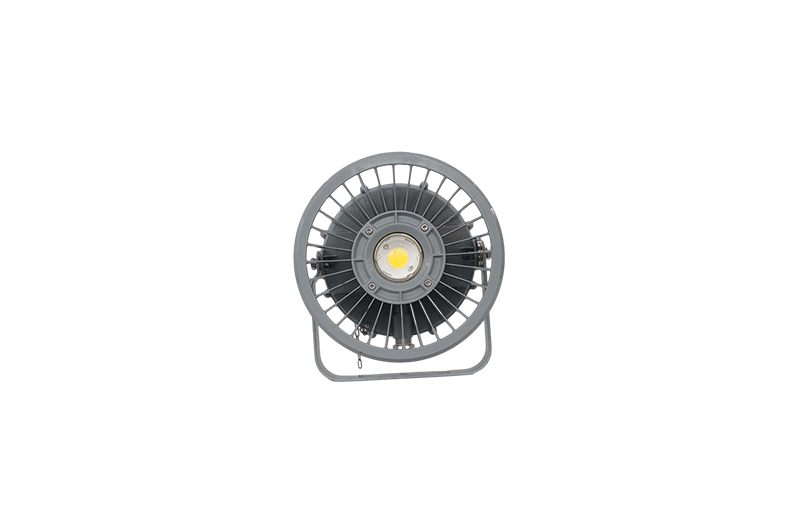-
 13316809242/15816897019
13316809242/15816897019
-
 59911926@qq.com/sales@goldenfuturehk.com
59911926@qq.com/sales@goldenfuturehk.com
 13316809242/15816897019
13316809242/15816897019
 59911926@qq.com/sales@goldenfuturehk.com
59911926@qq.com/sales@goldenfuturehk.com
Time:2025-02-14 Views:0
Helmet mounted explosion proof flashlights are a crucial safety and illumination solution in high risk, explosive environments such as mines, construction sites in hazardous areas, and industrial plants handling flammable materials.
The design of these flashlights for helmet mounting offers several advantages. They are usually attached to the helmet in a way that allows for easy adjustment of the light angle. This enables the user to direct the light precisely where it is needed, providing optimal illumination for the task at hand. The mounting mechanism is sturdy and reliable, ensuring that the flashlight remains in place even during physical activities and movements associated with the job. It is often made from materials that can withstand the rigors of the work environment, including impacts and vibrations.
The explosion proof feature of the flashlight is of utmost importance. The housing is constructed from materials that can resist the force of an explosion. High quality metals or advanced composites are used to create a robust enclosure. This housing not only protects the internal components from potential damage but also prevents any sparks or heat generated within the flashlight from igniting explosive substances in the surrounding atmosphere. The electrical components, including the battery compartment and the connections to the light source, are carefully engineered to be explosion proof. They are designed to prevent short circuits and overheating, which could lead to an explosion.
The light source, commonly LEDs, is chosen for its energy efficiency and low heat output. LEDs provide bright illumination while minimizing the risk of heating up the flashlight and causing an explosion. The optical design of the flashlight may be optimized to provide a focused beam or a wide angle light, depending on the specific requirements of the application. In a mining environment, for instance, miners need clear visibility in the tunnels, and the helmet mounted flashlight can be adjusted to provide the right amount of light for navigating, working on equipment, or checking for potential hazards. Regular inspection of the mounting system and the explosion proof components of the flashlight is essential to ensure its continued safe and effective operation.

A tactical explosion proof flashlight differs from a regular flashlight in several key ways:
1. Durability and Construction
Materials:
Tactical explosion proof flashlights are usually made from high strength materials such as aircraft grade aluminum alloy or stainless steel. These materials can withstand significant impacts, drops, and abrasions. In contrast, regular flashlights may be made of less durable plastics or lighter duty metals that are more prone to damage.
The body of a tactical flashlight often has a rugged, textured finish. This not only provides a better grip, especially in wet or slippery conditions, but also adds to its overall robustness. Regular flashlights may have a smoother exterior that is more aesthetically pleasing but less functional in a tactical or harsh environment.
Sealing and Protection:
A tactical explosion proof flashlight is designed to be waterproof and dust proof to a high standard. The seals are tight to prevent the ingress of moisture, dust, and other contaminants. This is crucial in environments where the flashlight might be exposed to rain, sand, or other debris. Regular flashlights may have some level of water resistance, but it's often not as comprehensive or reliable as that of a tactical flashlight.
The explosion proof feature of a tactical flashlight means that it can prevent the ignition of flammable gases or vapors. The enclosure is sealed to keep out explosive substances and is designed to contain any internal sparks or heat that could cause an explosion. Regular flashlights do not have this specialized safety feature.
2. Light Performance
Light Source:
Tactical flashlights typically use high intensity LEDs. These LEDs have a long lifespan and are energy efficient, providing bright light output. The light can penetrate darkness effectively and illuminate targets at long distances. While regular flashlights also use LEDs in many cases, the quality and intensity of the LEDs in tactical flashlights are often superior, designed to meet the demands of law enforcement, military, or security operations.
Beam Adjustability:
Many tactical flashlights offer adjustable focus or multiple light modes. For example, they can have a narrow, focused beam for long range illumination or a wide angle beam for close up area lighting. Some also have a strobe function, which can be used for signaling, disorienting an adversary, or attracting attention in an emergency. Regular flashlights usually have a more basic light output without these advanced beam adjusting capabilities.
3. Additional Features
Tactical Applications:
Tactical explosion proof flashlights often have features designed for self defense or emergency situations. They may have a built in glass breaker or serrated bezel that can be used to break through a window or as a defensive tool. Some also have a clip or mounting options to attach the flashlight to a belt, vest, or weapon for easy access and hands free use. Regular flashlights generally lack these tactical specific features.
Battery System:
The battery system of a tactical flashlight is usually more reliable. It may use rechargeable lithium ion batteries or high capacity disposable batteries to ensure long runtime. Some tactical flashlights also have a battery indicator to let users know when the battery is running low. In contrast, regular flashlights may have less efficient battery usage and may not provide as clear an indication of battery life.

